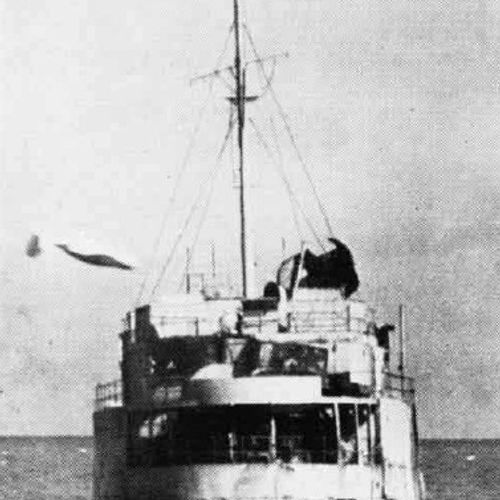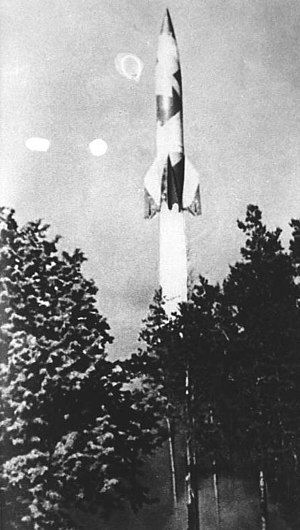
| Added | Fri, 15/12/2017 |
| Источники | |
| Версии |
This article is a Supplement to the history of Aeronautics, aviation and space exploration and expands on the history of unmanned aerial vehicles.
"Unmanned aerial vehicle" (or abbreviated to UAV) is any aircraft flying without crew on Board. In colloquial speech often say "drone" or "drone" (from the English "drone" – "drone" as he called this form of apparatus the captain of the third rank Delmar fahrni in 1936).
It is worth noting that the international civil aviation organization (ICAO) parts for RC model and UAV, indicating that the first is intended primarily for entertainment, so their use should be governed by other rules (local, not international), but here we will talk about the emergence of the idea of drones and the history of their development.
The first unmanned vehicles of up in the air, can be considered as balloons filled with bombs that were going to throw the Austrians on the Italian position in Venice, on 22 Aug 1849. Balloons were not driven (floated on the wind that played havoc with the Austrians), but were fitted with the release gear on the electromagnets.
The bombing of the balloon, 1848 (Source: Dr. Yuri Drosnin, Moscow, Russia)
The next stage in the history of drones does not directly relate to aircraft, but it gave a huge impetus on the way to the machines which we now know well. In 1889, inventor, physicist and engineer Nikola Tesla demonstrated the world's first radio-controlled boat. The development of this technology allowed us to create radio controlled torpedoes, and then began to be developed and remote-controlled aerial vehicles. Already in 1897, the British Ernest Wilson patented a system for wireless control of dirigible, although the details of whether it is implemented, do not exist.
Just 13 years later, in 1910, a military engineer from the United States, Charles Ketterin proposed to create a vehicle equipped with a clockwork mechanism. At the specified time he was supposed to drop wings and fall to the enemy. This idea was implemented, but had no success, so to apply in practice (in combat) is not reached. However, this prompted the inventors to continue development in this direction, and in 1916, made its first flight automatic airplane the Hewitt-Sperry, also known as the "flying bomb" or "aerial torpedo". It was an early version of the modern cruise missiles; aircraft position in the space was controlled by a gyro system.
After the First world war, several aircraft were converted to drone Americans. Due to the success of this improvement, already in 1933, the British launched radio-controlled target reusable Fairey Queen on the basis of reconnaissance aircraft Fairey IIIF.
DH.82B Queen Bee – UAV-target
Those targets were used by the Navy in developing skills of reflection of air attack. Since drones are often used during exercises. The U.S. Navy first used an unmanned flying target in the exercise in 1938.
Winston Churchill and others expect the launch Havilland Queen Bee, 6 Jun 1941
In the USSR in the 1930s and 1940s in Leningrad NIMTE developed "glider for special purposes", that started with the air launch and land on water. He could carry one torpedo, while its targeting was carried out via infrared beam. And in 1941, the Soviet heavy bomber TB-3 was successfully used as a unmanned aircraft for the bombings of the bridges.
World war II had a significant impact on the development of radio-controlled weapons. In this period, were created not only gliding bombs, Henschel Hs 293 and Fritz X, but cruise missile "V-1" (1942) and ballistic missile "V-2" (1942).
V-1
The launch of the rocket "V-2" from the landfill Maas, the Netherlands, between 1942 and 1945.
During World War II, the Radioplane firm has created for the U.S. air force nearly 15 thousand UAVs, including model QQ-3 and QQ-14, various modifications drone strike bomber Interstate TDR-1, as well as a number of guided aerial bombs, including self-guided gliding bomb, the ASM-N-2 Bat – the world's first completely self-guided weapons.
ASM-N-2 Bat strikes the target
The cold war gave new impetus to the development of UAV technology. In the 1960-ies started to use long-range reconnaissance drones capable of recording video, to gather information about terrain conditions, etc. Such spy drones later began to be used for peaceful purposes.
Every year the mechanisms of the drones improved, and their popularity in various industries continued to grow. In the modern world they are used not only in military but also for civilian purposes (agriculture, construction, fire safety, etc.); they do not only monitoring areas, gathering weather information, but even the transportation of goods. More recently was developed the post drones delivering small parcels:
For researchers of the paranormal knowledge of the history, forms, and assignments of unmanned aerial vehicles is necessary because, in connection with the diversity of their structures, as well as low awareness of the civilian population (for example, due to the secrecy of technology) UAV at all times could easily be mistaken for a UFO.
Translated by «Yandex.Translator»
The first unmanned vehicles to take to the air can be considered balloons equipped with bombs, which the Austrians were going to drop on Italian positions in Venice on August 22, 1849. The balloons were not controllable (they floated in the wind, which played a cruel joke with the Austrians), but they were equipped with electromagnetic bomb throwers
Log in or register to post comments









In this article author expresses his opinion and is not intended to offend or tarnish someone. Constructive discussion of the content of the article is encouraged. Not essential comments will be ignored. Comments that bear the offensive, as well as containing pornography, advertising and promotion (political, religious, etc.) are not permitted and will be removed by administrtation.
Comments
Песни, что становятся источником вдохновения – Андрей Вебер
Ищете надежные материалы по SEO и интернет-маркетингу? Посетите seoros.ru — содержит много полезной информации для продвижения сайтов.
Ищете советы по веб-разработке и продвижению? Рекомендуем ознакомиться с web-spider.ru — один из лучших ресурсов для тех, кто хочет развить свои навыки в SEO.